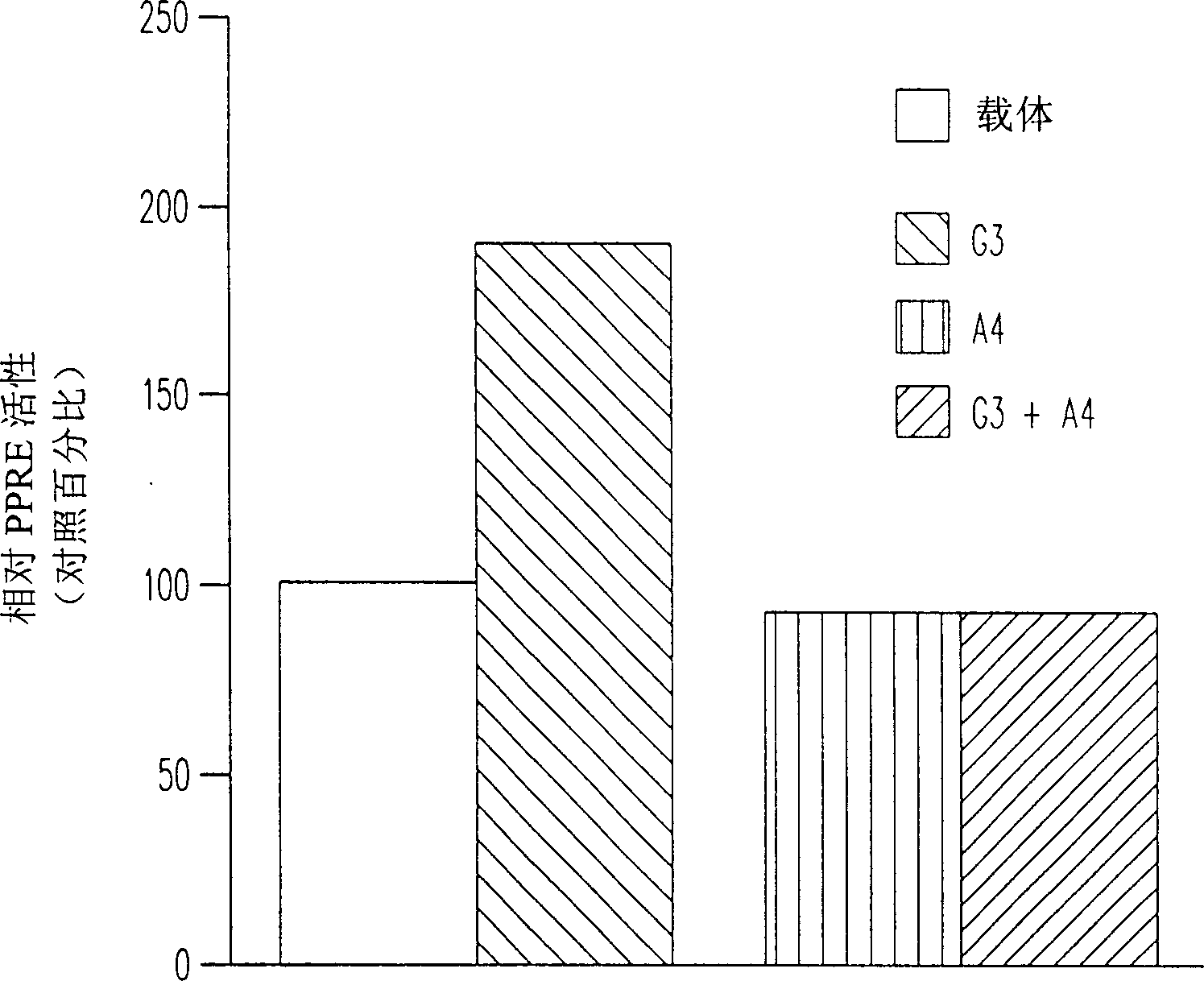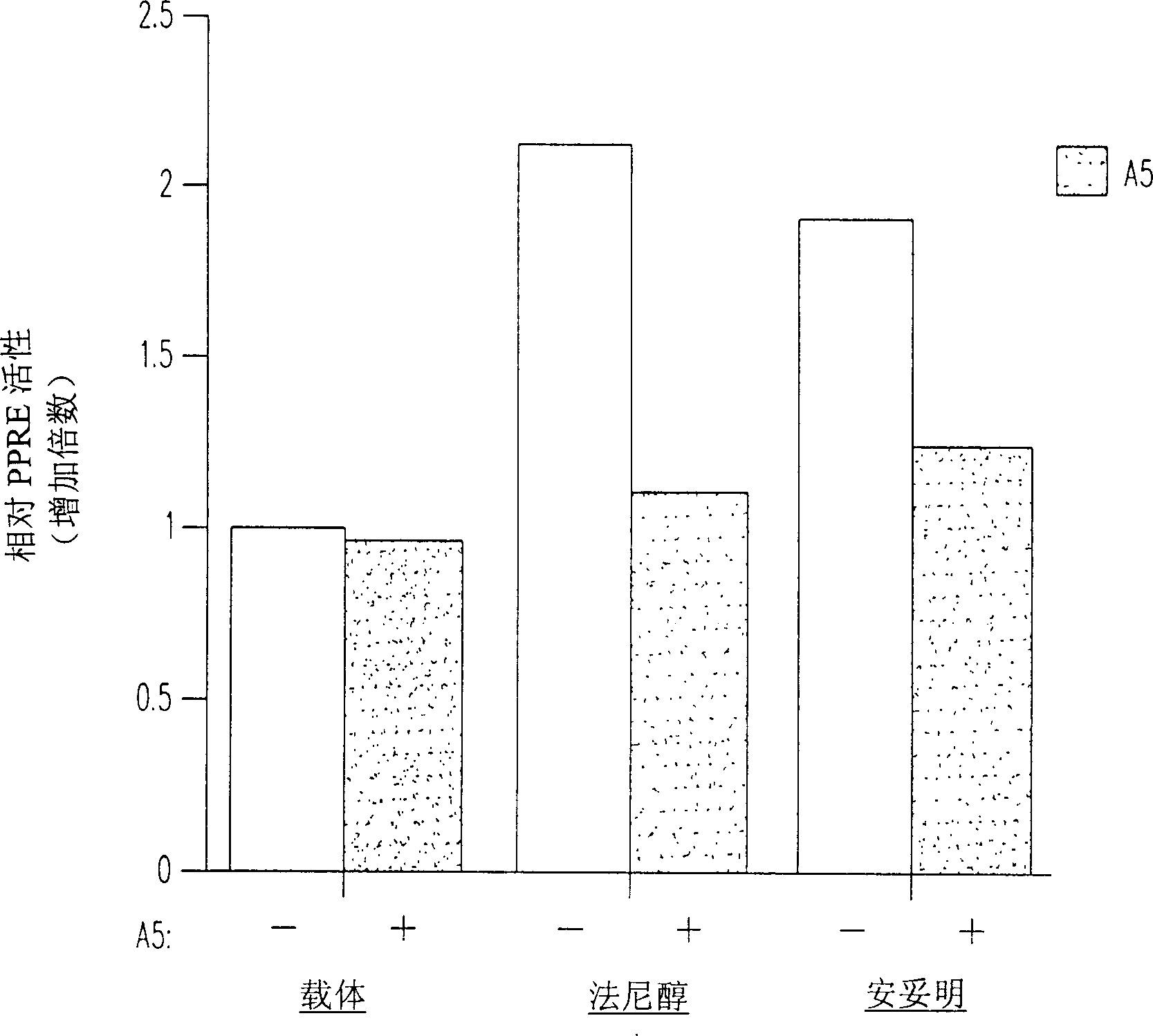Method of treating skin conditions
A technology for improving skin and condition, applied in the fields of improving or treating disease states associated with PPAR upregulation, skin and other disease states, prevention, perilla seed oil, improving the health and aesthetics of affected skin and/or hair, Ability to address issues such as not revealing or pointing out the cosmetic appearance of the skin
- Summary
- Abstract
- Description
- Claims
- Application Information
AI Technical Summary
Problems solved by technology
Method used
Image
Examples
Embodiment 1
[0059] The effect of known PPAR agonists and compositions of the invention on PPAR upregulation in human skin cells was determined by measuring the relative activity of PPRE ("Peroxisome Proliferator Response Element"). Preconfluent keratinocytes were transiently transfected with PPRE-luciferase reporter constructs together with β-galactosidase. Four similar groups of cells were then treated for 24 hours. The first set consisted of media containing 0.05% dimethylsulfoxide (DMSO). The second group was treated with G3, a PPARα agonist. The third group was treated with A4 (perilla seed oil diluted 100 times with DMSO). The fourth group was treated with G3 and A4.
[0060] The results are shown in Figure 1, the addition of a PPAR agonist (G3) almost doubled the PPRE activity compared to the vehicle sample. Addition of perilla seed oil (A4) completely inhibited the upregulation of PPAR in the presence of G3. Example 2
Embodiment 2
[0061] Preconfluent keratinocytes were transfected with PPRE-luciferase and β-galactosidase as described in Example 1. Six similar groups of cells were then treated for 24 hours. The first group consisted of media containing 0.05% DMSO. The second group was treated with A5 (perilla seed oil diluted 100 times with DMSO). The third group was treated with farnesol, a PPAR activator. The fourth group was treated with farnesol and A5. A fifth group was treated with a clofibrate analog, a known agonist of PPARα. A sixth group was treated with the clofibrate analogue and A5. As shown in Figure 2, the addition of A5 to cells treated with PPAR agonist significantly inhibited the upregulation of PPAR. In fact, even in the presence of this stimulant, A5 was able to maintain the activity of PPRE in the range of vehicle alone.
PUM
 Login to View More
Login to View More Abstract
Description
Claims
Application Information
 Login to View More
Login to View More - R&D
- Intellectual Property
- Life Sciences
- Materials
- Tech Scout
- Unparalleled Data Quality
- Higher Quality Content
- 60% Fewer Hallucinations
Browse by: Latest US Patents, China's latest patents, Technical Efficacy Thesaurus, Application Domain, Technology Topic, Popular Technical Reports.
© 2025 PatSnap. All rights reserved.Legal|Privacy policy|Modern Slavery Act Transparency Statement|Sitemap|About US| Contact US: help@patsnap.com


